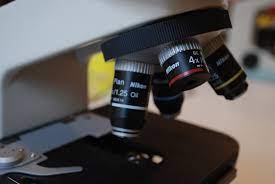Every year on April 19th, people around the world celebrate Microscopy Day. This day is dedicated to promoting and raising awareness about microscopy as an important tool in scientific research. Over time, the microscope has revolutionized the field of science, allowing scientists to explore and discover the world in an entirely new way.
 In recent years, haptic technology has represented a significant innovation in the development of high-precision microscopy. Haptic technology uses sensors and actuators to provide tactile feedback to the user, allowing them to feel and control the manipulation of virtual objects in a much more precise way than would otherwise be possible.
In recent years, haptic technology has represented a significant innovation in the development of high-precision microscopy. Haptic technology uses sensors and actuators to provide tactile feedback to the user, allowing them to feel and control the manipulation of virtual objects in a much more precise way than would otherwise be possible.
The use of haptic technology in microscopy has led to a significant improvement in the precision and accuracy of sample manipulation. This is particularly important in fields such as medicine and molecular biology, where researchers work with extremely small and delicate structures. Haptic technology provides researchers with the ability to feel and manipulate these structures with increased precision and accuracy, without damaging them.
Additionally, haptic technology can be used to help researchers feel the physical properties of objects, such as density or texture. This information can be particularly useful in studying complex structures or identifying unknown substances.
Another important advantage of haptic technology is that it can be used to improve the experience of microscope users. Haptic sensors can be integrated into instruments, allowing researchers to feel and control the movements of the microscope with greater precision and control. This feature is particularly important in studies that involve image analysis and detecting subtle details.
Technological innovation continues to bring improvements in the use of haptic technology in microscopy. For example, a team of researchers in Japan has developed a haptic microscope that can simulate the texture and shape of examined objects, allowing users to explore the material properties in detail. This was achieved by integrating force sensors into the microscope, which simulate the force required to explore the surface being analyzed.
In addition, haptic technology has enabled improvements in laser microscopy and electron microscopy systems, which require extreme precision in controlling and manipulating samples.
Today, on April 19th, we celebrate Microscopy Day and remember the importance of this technology in scientific and medical research. The integration of haptic technology in microscopy has led to greater precision and control, allowing researchers and doctors to explore and discover new horizons in the microscopic world. Let’s celebrate this day by appreciating the extraordinary tool we have at our disposal, which has changed the way we relate to the surrounding world and our knowledge about it.